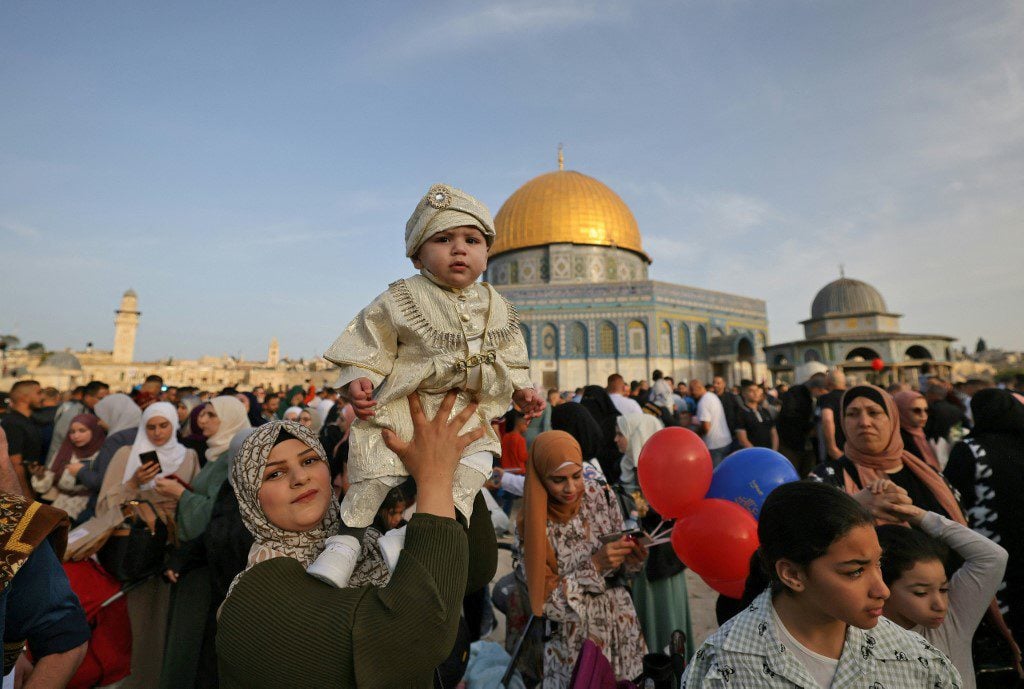
Majed Kayali
It is hard to anticipate the future of the ongoing clashes in Jerusalem. Such incidents were witnessed last year in what is known as Sheik Jarrah’s uprising.
Those clashes were a reaction to Israel‘s colonial and racist policies, which compromised the Palestinian sovereignty in Al-Aqsa Mosque. Far-right Jews were allowed to storm the Christian and Muslim holy sites, and the Israeli policy that reinforced settlements changed the city’s demographics.
These systemic actions have been ongoing since the Israeli annexation of East Jerusalem after occupying the rest of the Palestinian historical lands in the June War in 1967, an illegal annexation condemned by international resolutions.
Such policies have resulted in, for instance, the outbreak of the Western Wall Tunnel riots in 1996, which were ignited by digging a tunnel beneath the Al-Aqsa mosque during Benjamin Netanyahu’s first term as prime minister.
Consequently, 65 Palestinians and 17 Israelis were killed. That uprising witnessed the participation of Palestinian security forces marking the first Israeli-Palestinian confrontation since The Oslo Accords and the Palestinian Authority establishment in 1993.
In September 2000, Ariel Sharon’s violation of the Al-Aqsa’s sanctity had caused the outbreak of the Second Intifada resulting in the death of 5000 Palestinian and 1040 Israelis.
Palestinian history underwent similar incidents; such as the Al-Buraq Revolution in 1929, when Jerusalem, along with the other Palestinian cities, had witnessed bloody clashes between the Palestinians and the extremist Jew settlers. At the time, these settlers acted as if the Al-Buraq Wall “or the Wailing Wall” belonged to them and considered it as an extension of “Solomon’s Temple.”
These clashes led to the death of 116 Palestinian and 133 Jews. At that time, the British mandate authorities had intervened in favour of the settlers. Another massacre occurred in October 1990 when some of the settlers attempted to break into the Al-Aqsa Mosque to lay the foundation of the Third Temple under the Israeli army’s protection. Palestinians fought back, and 21 of them were killed.
Thus, since Israel occupied the rest of the Palestinian territories in 1967, Jerusalem has held a special position in the Palestinians’ and their national movement’s hearts and minds.
It has always been regarded as a historical, religious and national symbol. That was expressed in the official documents issued by the PLO, the factions, and every other Palestinian organisation.
These documents included the Declaration of Independence, in which the Palestinian national council had declared “the establishment of the Palestinian state and its capital is Holy Jerusalem” in November 1988.
Different approaches were followed while dealing with the Palestinian Cause depending on the ongoing developments. Things were getting more complicated concerning the conflict: resisting occupation, settlements, displacement, Judaization, land confiscation, and other available options.
In this context, the Palestinian approach to dealing with the dilemma of Jerusalem included three intertwined issues: firstly, considering Jerusalem a holy place because of the existence of the Al-Aqsa Mosque and as a sacred land for all monotheistic religions.
Secondly, clashes often occur in the city because of Israel’s desire to claim the city as its capital through its persistent attempts to change its demographic nature and reinforce Jewish settlements.
The third issue is related to the human rights side, exposing Israel’s policies and its tireless efforts to harass the Palestinians of Jerusalem, expel them from it, take over their homes and lands, and adopt a policy of home demolitions.
The Palestinian resistance aiming to free Jerusalem peaked during the first Intifada (1987–1993). As a result, Jerusalem became a capital for the Palestinians and an epicentre for their uprisings, especially with the Palestinian authority being abroad and with the emergence of credible Jerusalem personalities like the late Faisal Husseini.
Two places played a significant role in the Intifada at that time. First, the Al-Aqsa Mosque, where Friday’s prayer, during which hundreds of thousands of Palestinians gathered, is considered one of the most prominent depictions of Palestinians’ uprisings against the occupation. The second is the Orient House, which served as a guidance centre for the Intifada, and a gateway for the Palestinians in the occupied territories. This centre became a headquarters visited by foreign ministers, ambassadors, consuls, and media correspondents.
There are two significant problems when it comes to the current uprising. The first is that the Palestinian leadership, in its attempt to respond to the popular uprising by halting all forms of contact with Israel, did not prepare itself or its people for such a challenge.
Therefore, this same leadership is now required to review its experience and options and rehabilitate its conditions and the conditions of national entities to face various Israeli challenges.
Secondly, this uprising is in dire need of both Arab and international support, which is doubted in the light of the current state of the Levant countries. Consequently, Israel feels that it has the upper hand.
Hence, pulling this uprising’s strings is a must, or it will be subjected to Israel’s exploitation.
This situation indicates a transformation or disorder within Israel. After the secular parties used religion to justify the establishment of Israel and to attract religious Jews all over the world, the religious and nationalist parties came to dominate Israeli politics. This is a manifestation of the Knesset’s Basic Law in 1918 that considers Israel the nation-state of the Jewish people everywhere.
Popular uprisings are just one step in a long, complicated path of conflict between Israel, a racist colonial force, and Palestinians defending their right despite being overpowered by their oppressor.
DISCLAIMER
The opinions expressed in this publication are those of our bloggers. They do not purport to reflect the opinions or views of Fanack or its Board of Editors.


